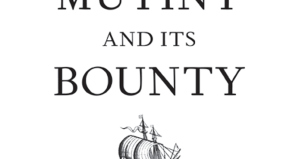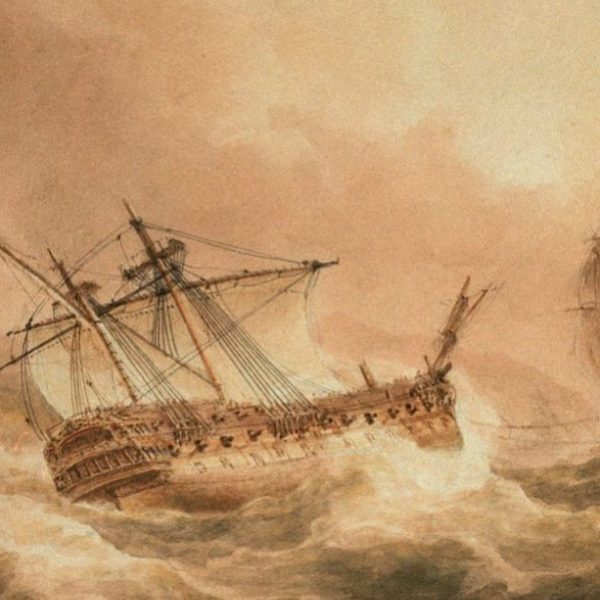Mutiny Profiles: Henry Hudson
 Hudson shows today’s leaders that an obsessive leader is a real danger to entrepreneurial ventures and members eventually have a responsibility to depose the authority of such a leader.
Hudson shows today’s leaders that an obsessive leader is a real danger to entrepreneurial ventures and members eventually have a responsibility to depose the authority of such a leader.
Patrick J. Murphy and Ray W. Coye’s Mutiny and Its Bounty: Leadership Lessons from the Age of Discovery explores how great seafaring captains like Columbus and Magellan not only quelled mutinies but also built upon such incidents to strengthen their enterprises. Today’s organizational leaders have much to learn about leadership and tactics from these earlier masters. Learn more and read a short excerpt from the book below.
A few leadership qualities of the unusual Henry Hudson:
- Poor communicator and navigator skill but obsessed with achieving success.
- Mutiny saved his enterprise but he did not survive it after being deposed.
- Poor strategist but master tactician.
- Likable person but not a task-competent leader.
Patrick J. Murphy and Ray W. Coye—
 Toward the end of the Age of Discovery a shift in the dominant perception of mutiny took place. The famous mutiny during Henry Hudson’s 1610-1611 enterprise is a case in point. Unlike Columbus, who quelled mutiny by inspiring hope, Magellan, who suppressed it by exercising authority and brutality, and Sebastian Cabot, who brilliantly gauged mutineers’ intentions ahead of time, Hudson was a masterful tactician but an ambivalent strategist. Mutiny evolved aboard his ship as a natural human force, and he was deposed.
Toward the end of the Age of Discovery a shift in the dominant perception of mutiny took place. The famous mutiny during Henry Hudson’s 1610-1611 enterprise is a case in point. Unlike Columbus, who quelled mutiny by inspiring hope, Magellan, who suppressed it by exercising authority and brutality, and Sebastian Cabot, who brilliantly gauged mutineers’ intentions ahead of time, Hudson was a masterful tactician but an ambivalent strategist. Mutiny evolved aboard his ship as a natural human force, and he was deposed.
Although Hudson was not the greatest navigator, he was a distinctive, influential leader for whom the Hudson Bay and the Hudson River are named. His life’s goal was to find a northwest passage for ships sailing from Europe to the Spice Islands, India, and other points in the East. Mutiny saved his enterprise in at least one instance, but it was also his final undoing.
…
At the outset, mutiny is always a delicate and strategic affair. The best-executed mutinies helped a venture even while allowing mutineers to avoid punishment. By this point, in 1608, mutinies were judged with extreme prejudice. Mutineers like Juet could now easily be sentenced to death if convicted. But even an increased threat of punishment was not an adequate deterrent. In fact, this new view probably forced mutiners to be more ingenious and cunning. Juet’s mutiny strategy benefited from the same elements that make leadership effective. It was, much like the leadership strategy Columbus used to quell mutiny on his 1492 voyage, simple and brilliant.
As Hudson fumbled around in the Barents Sea, many incidents offered an opportunity to put the mutiny plans into action. Juet eventually reacted to one of htose incidents, a disagreement over the heading. He told Hudson, on behalf of everyone, to head back to England or else they would remove him as captain. But he cast the demand in more agreeable and subtle terms. Juet and the mutineers asked Hudson to draft an official certificate in his own hand, sign it, and circulate it. Hudson would, in his own words, write that he was stopping the venture under no compulsion from anyone. They would follow Hudson, to be sure, but only if he agreed to lead in the direction they wanted to go. With such a document in the members’ hands, Hudson would find it almost impossible to take recourse against them. If he were to redact the decree or deny its veracity, trust in his ability to lead an enterprise would be destroyed in England.
Hudson’s authority was thus completely subverted in a well-designed mutiny. The ship returned to England safely, and nobody was punished.
Excerpted from Mutiny and Its Bounty: Leadership Lessons from the Age of Discovery. Copyright © 2013 by Patrick J. Murphy and Ray W. Coye. All rights reserved.





Love the title!